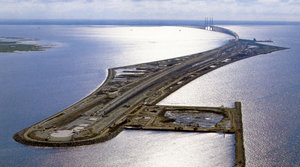

When an underground structure is built a redistribution of the natural initial stresses takes place. Due to this redistribution, the underground structure will be subjected to a certain level of stresses and hence loads that will depend very much on the geomechanical characteristics of the ground.
So, in the case of underground structures made in soil the supporting role will be done almost completely by the structure itself, whereas in the case of rock masses it is a combination of rock and structure that will withstand the stress redistribution in the ground.
So, in order to design the underground structure, it will be necessary to take into account the geotechnical characteristics of the ground, the in-situ natural stresses and the construction procedure that will be followed. This is a complex analysis, that can be achieved in different ways, depending on the level of approximation needed.
Empirical design methods
These methods are based on the use of the different geomechanical classification systems: RQD, RMR, Q. Several diagrams exist that correlate the value of RMR,RQD or Q with the different support elements needed to guarantee stability for a certain geometry. These methods have the advantage of being able to give an easy and quick answer for the support design, but as they are empirical, their result must be taken as a rough approximation valid just for preliminary studies.
Analytical methods: Convergence-Confinement
These methods are based on analytical closed solutions for cases of circular openings in grounds that can be modeled with an elastic or elasto-plastic behavior. Under simplified assumptions of natural stresses and geometry, it is possible to calculate analytically the relationship between deformation and internal pressure on a circular opening in the ground (characteristic curve of the cavity). At the same time, it is possible to calculate analytically for a certain kind of support the same relationship between internal pressure and radial deformation (characteristic curve of the support). The intersection point between the two curves gives the equilibrium point (pressure and deformation) for a certain combination of cavity and support element. This method is more or less easily applicable and can draw quite good results for a support design; however, its applicability is reduced to very simplified conditions of natural stresses, geometry, geomechanical behavior and geological layout.
Numerical methods: Finite elements and Finite differences
With the aid of nowadays computers, numerical methods have become a very useful tool for designing underground structures. Finite element methods, one of the most used methods, are based on the principle of discretization of a body into a number of finite elements. The behaviour of these elements can be controlled by imposing certain laws of mechanics in a predefined manner under the action of external influences. Finite elements methods can be used to model the behaviour of tunnel structures for a variety of assumed ground conditions and geometries; these include linear or non-linear elastic responses and non-linear material behaviour (plasticity). These methods normally model the ground as a continuum medium, but some of them also allow to model the ground as a discontinuum medium that represents much better the behavior of rock masses that are heavily fractured.
To know more
ITA Endorsed publications
